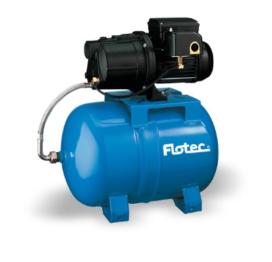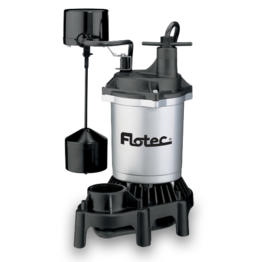
What is Agroponics
In this article, we will expand on the different categories of hydroponics. If you haven’t read our Foundation of Hydroponics article, consider going back and checking it out. Just to recap, the first category that is used to classify hydroponic systems is called the Class of Hydroponics, and it describes the way plant roots are supported in a system.
The term “Agroponic” comes from the word aggregate, meaning a material or structure that is formed from a loosely compacted mass of particles. In an Agroponic system, roots are supported in a solid aggregate media such as coconut coir, perlite, or expanded clay pellets. The media is inert; it does not provide any nutrition for the plants. Because the media supports the roots, this is the most natural way to grow plants that are traditionally grown in a soil media. We’ll take a look at the different types of media available, but note that they all have something in common: they all provide some level of oxygenation to the plants because the particles allow airflow between them.
Different Types of Media used in Agroponics:
- Coconut coir is made from the husk of the coconut and is very sustainable. It is packaged into a compressed block that swells when water is added- to it.
- Perlite is made from volcanic glass that is heated to very high temperatures till it pops like popcorn. It is very lightweight and comes in a variety of particle sizes from sand to the size of a pea.
- Vermiculite is a mineral that is mined from the earth, heated, and then expanded to form lightweight particles.
- Rockwool is made from basalt rock and chalk that has been heated to very high temperatures and spun into a wool-like fiber. It is sold in all different sizes, from 10 by 20 inch sheets to 36 by 6 inch blocks.
- Expanded clay is clay that has been expanded from its exposure to very high temperatures so that individual granules can be created. It is great for airflow as the particles are relatively large, but when used in bulk can be quite heavy and cumbersome.
- Gravel may be used, but it does not have any water absorption capacity and is very heavy.
- Expanded Glass is a recycled glass media. It is made by melting down recycled glass bottles and expanding it into an aggregate that resembles a cross between a river rock and volcanic rock or may also look like a white BB. This media is very lightweight, and has excellent water drainage, and air flow capabilities.
One advantage of the Agroponic method is that the media holds onto some of the nutrient water so that the plants can use it later if they need to. This is a huge benefit over Aeroponics and Aquaponics because if something goes wrong with the irrigation system and the roots do not receive water for a period of time, in the case of a power failure for example, plants will not die right away. For a commercial grower, this can make all the difference between success and failure.
There are many different types of hydroponic systems that use Agroponics`, and various sources of nutrients may be used with these systems. Excess waste from aquaculture may be used to fertilize plants growing in Agroponics. Bioponics, or nutrients that come from biologically decomposed organic matter, can be used as well. High quality hydroponic nutrients are a great choice for Agroponics; check out our EzGro Nutrient Formulas, which are highly concentrated so you get more bang for your buck.
Agroponics is the most versatile of the three different classes of hydroponics. It can be used with open or closed systems, vertical systems, or more traditional containers. A greenhouse may also be filled with aggregate media and planted with fruit trees!
The EzGro Garden systems are based on Agroponics, as our signature quad pots are filled with media, typically a combination of coconut coir and perlite. This is an example of an ebb and flow system, because nutrients flow through the media. The media stays moist so that plants can use the nutrients as they need to, but it also allows excellent airflow and drainage so the roots don’t rot.
Be on the lookout for more articles expanding on the Foundation of Hydroponics!

Hydroponic Nutrients

EC vs TDS

Organic Does Not Mean “No Pesticides”

How Plants Uptake Nutrients

What is Aquaponics
Trackbacks and pingbacks
No trackback or pingback available for this article.
Articles
Featured
-
 EzGro Quad Pot 25 PackRegular Price $274.99
EzGro Quad Pot 25 PackRegular Price $274.99 -
 EzGro Patio GardenRegular Price $389.99 – $399.99
EzGro Patio GardenRegular Price $389.99 – $399.99 -
 Chemilizer InjectorRegular Price $349.99
Chemilizer InjectorRegular Price $349.99 -
 Vegetable Formula single dose SetRegular Price $29.99
Vegetable Formula single dose SetRegular Price $29.99 -
 Rainwater Pressure Tank SystemRegular Price $449.00
Rainwater Pressure Tank SystemRegular Price $449.00 -
 Submersible Thermoplastic Sump Pump 1/2 HPRegular Price $269.00
Submersible Thermoplastic Sump Pump 1/2 HPRegular Price $269.00 -
 Drain Dish & Diffuser Dish Set 5 PackRegular Price $69.95
Drain Dish & Diffuser Dish Set 5 PackRegular Price $69.95 -
 Drain Dish & Diffuser Dish SetRegular Price $16.99
Drain Dish & Diffuser Dish SetRegular Price $16.99 -
 Ten Tower Deck GardenRegular Price $3,499.00
Ten Tower Deck GardenRegular Price $3,499.00 -
 Drain Dish & Diffuser Dish Set 10 PackRegular Price $124.99
Drain Dish & Diffuser Dish Set 10 PackRegular Price $124.99









Leave a reply